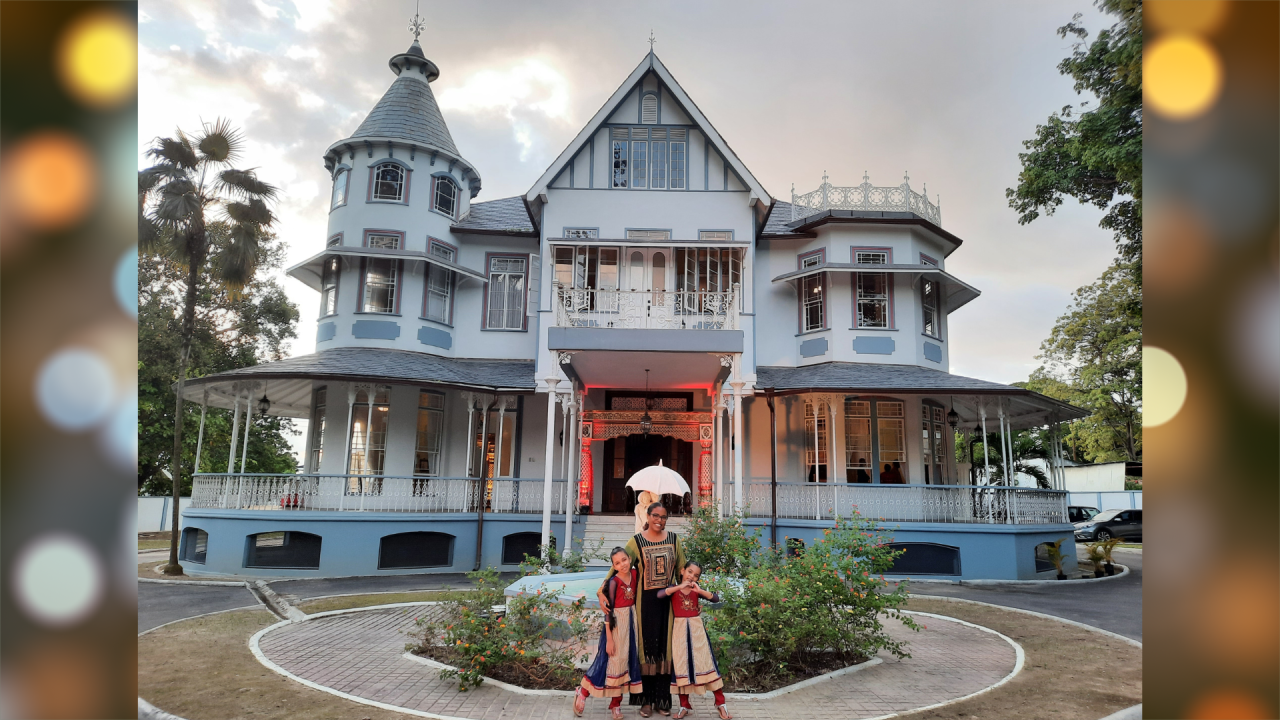
Building Communities with History
I am Kara Roopsingh, and I am from the Caribbean nation of Trinidad and Tobago. I would like to start off by inviting you all to say thank you. Yes, go ahead and say thank you.
You’re welcome!
You’re probably wondering why you just thanked me, and I am going to tell you in a minute.
See, I work at the National Trust of Trinidad and Tobago, and our mission is to safeguard, and preserve, and educate the world on our built and natural heritage. The way I think about myself is that I am a memory keeper. Well, you all know the saying, “If you don’t know your past then you don’t know your future.” Bob Marley, another proud Caribbean voice, famously said that. And I asked you to say thank you to me today because I am keeping the memory of our nation’s past alive. And I want to share with you three things from my work that I have learned that I think are of great value to the world and the challenges we face as a global community.
- I have learned that there are very few instances where we know the whole story. There is always more to learn and there is always more than meets the eye. Conflict and misunderstanding usually comes from what we don’t know about the other. And we have to start by trying to understand the other. And in this case, those who came before us.
- The second thing that I have learned, is that in understanding comes pride. Once we understand something we can value it, and once it is valued, we can conserve it, preserve it and learn from it. And understanding our history has made me a proud Trinbagonian.
- And the third and final lesson I have learned from preserving our built and natural environment is that the past is constantly trying to inform and educate the present so that we can achieve an improved quality of life for our future.
I am going to give you a story about a historic building in Trinidad and Tobago. A beautiful two-story wooden building of French provincial architecture with its frilly cast iron railings painted in white with light blue walls. And as I tell it, I am sure you will see many lessons from the past.
It was built in 1904 by Mrs. Prada as a gift to her husband. Did that line sink in? I shall say that in a different way, so you understand, Mrs. Prada, a woman, in 1904 colonial Trinidad paid for a home to be built for her husband. Before women had the right to vote or could own property.
Mrs. Prada named it Mille Fleurs, which is French for “a thousand flowers”, as she loved flowers and kept a beautiful garden.
In June 1979, the then-independent government of Trinidad and Tobago purchased the house from the third prominent family owner. Fast forward many years, it was used by various Ministries and agencies, and in 2000 Mille Fleurs was abandoned.
If you know anything about natural materials like the wood and the lime mortar it was made out of, combined with a tropical environment, you could imagine that this majestic historic building was ravaged by time and climate. The National Trust, where I work, warned the government that the building did not have a future if the present condition continued. One restoration expert who assessed the building said famously that “the only thing holding that building up are the termites holding hands and our prayers.”
Now, to restore it, we had to face the harsh reality that the craftsmanship and skill that went into the building that structure was now lost in Trinidad and Tobago. So, we turned to our Caribbean brothers and sisters in Cuba, and the Dominican Republic, as these islands were able to retain the artisanship knowledge necessary to repair the building. And with those regional partnerships in place, the restoration of the Historic property was completed in 2020 and was handed over to the National Trust as our headquarters.
We immediately knew this building was special and needed to be open access to all our citizens, visitors and families, and that is exactly what we did. You see that the old building that nobody cared about has now become a focal point of community activities, social engagements and gatherings. And in fact, the past became the present, even in our efforts to restore the flower garden, and once we restored it, and we valued it, and we shared its story with the nation, communities started to value it again. Mille Fleurs has adapted to its new life from a home to a shared community space. You see, it never lost its purpose. We lost the understanding of the value of it, and once it came back, the community came back too.
And yes, it is true that our colonial past is a painful one, but we need this; we need to remember this and to allow that pain to fuel us into a better future.
So now I invite you to say thank you again, but this time to those ancestors, lessons learned and experiences from history that continue to teach us and shape our lives today. To that we can all say thank you.